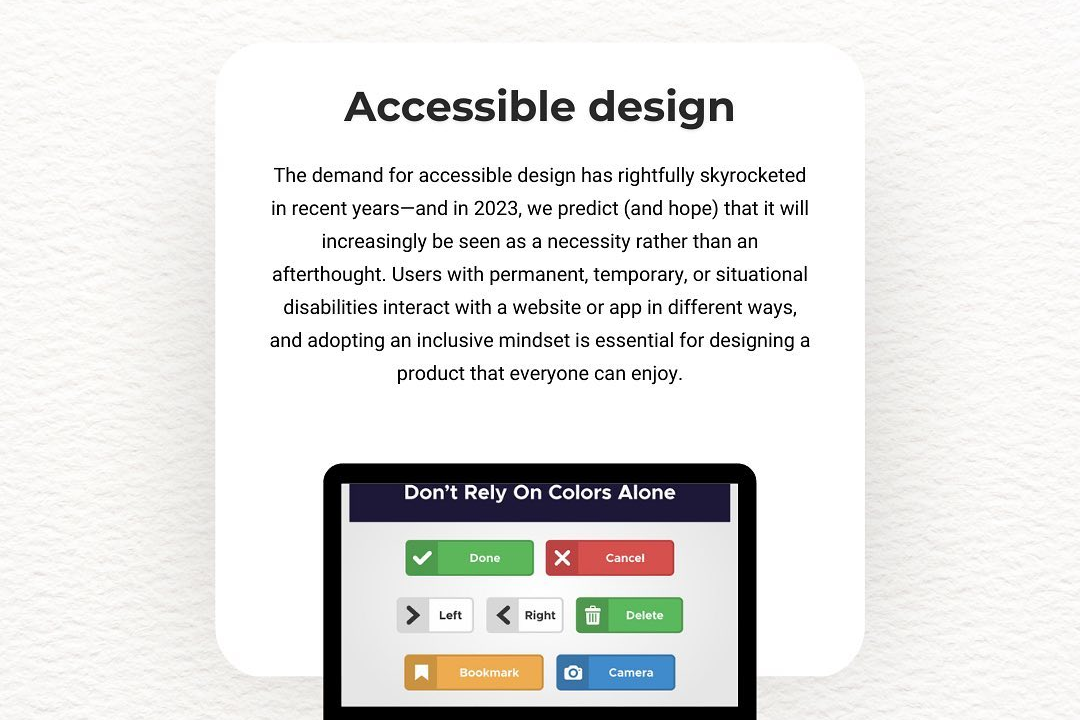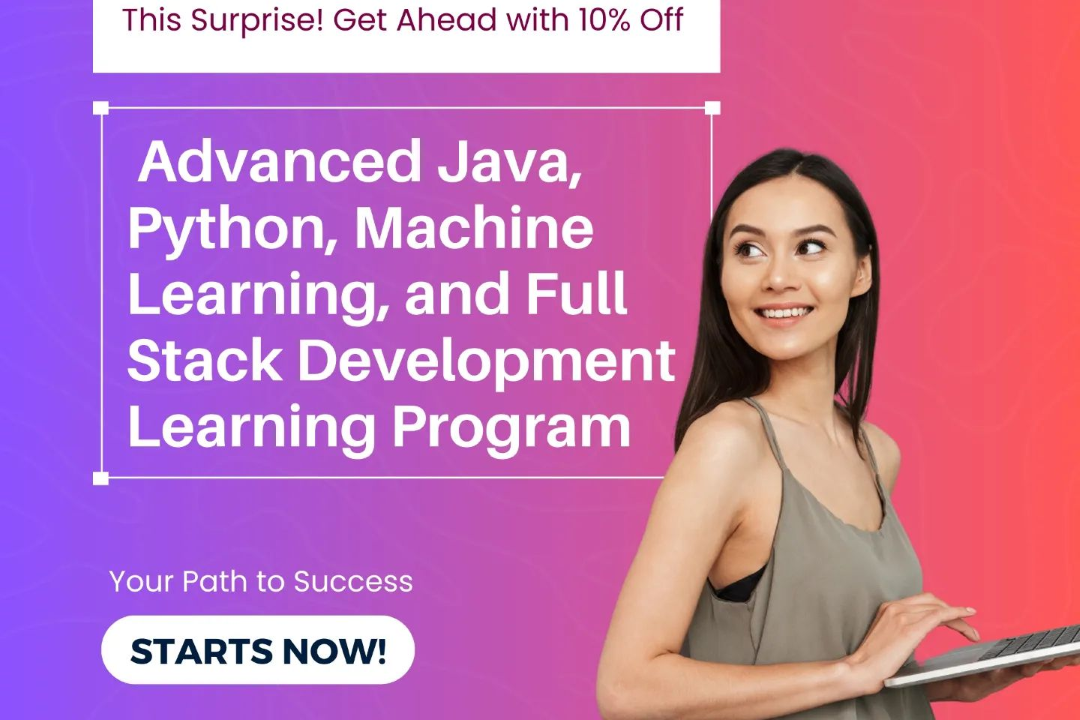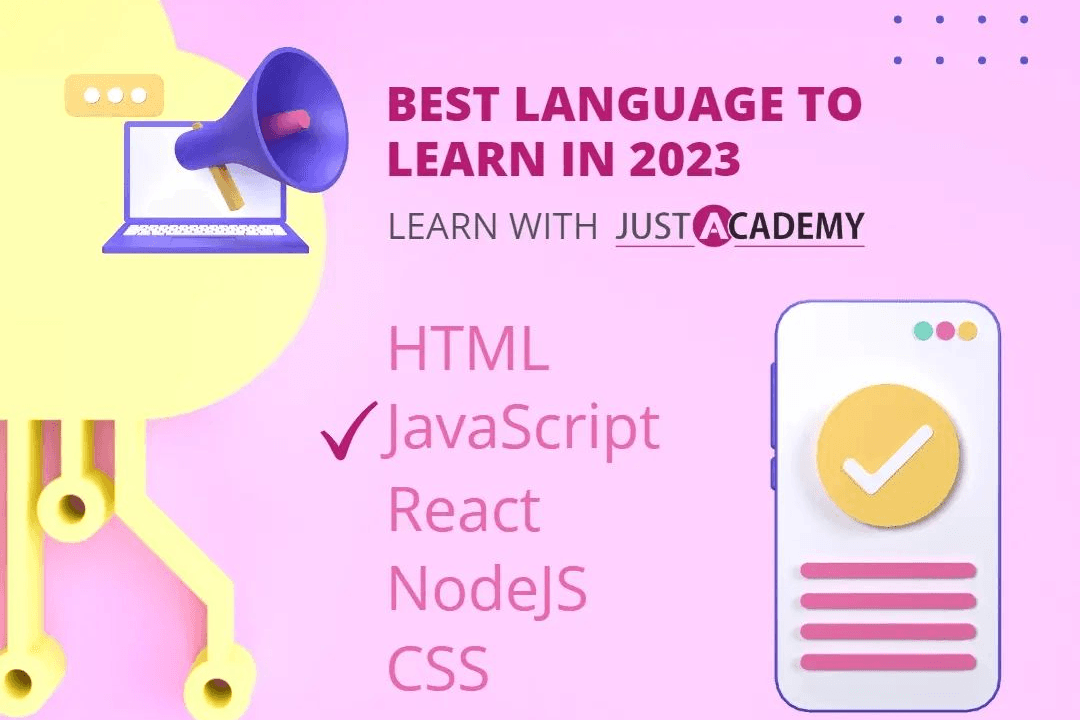Free Download PDF of PHP Programming
Our free PDF download on PHP programming offers a detailed and accessible guide designed for learner
Free Download PDF of PHP Programming
The free PDF download on PHP programming provides a comprehensive and easily accessible resource for anyone interested in mastering server-side scripting with PHP. It highlights essential concepts, practical examples, and best practices, making it an invaluable tool for beginners and experienced developers alike. By studying this PDF, learners can quickly grasp the fundamentals of PHP, accelerate their web development skills, and build dynamic, feature-rich websites efficiently—all at no cost.
To Download Our Brochure: https://www.justacademy.co/download-brochure-for-free
Message us for more information: +91 9987184296
The free PDF download on PHP programming provides a comprehensive and easily accessible resource for anyone interested in mastering server side scripting with PHP. It highlights essential concepts, practical examples, and best practices, making it an invaluable tool for beginners and experienced developers alike. By studying this PDF, learners can quickly grasp the fundamentals of PHP, accelerate their web development skills, and build dynamic, feature rich websites efficiently—all at no cost.
Course Overview
The ‘Free Download PDF of PHP Programming’ course offers a comprehensive introduction to PHP, covering fundamental concepts, syntax, and practical applications. Through easy-to-follow tutorials and real-time project examples, learners will acquire the skills needed to develop dynamic websites and server-side applications efficiently. Perfect for beginners and coders seeking a quick, accessible resource, this course provides essential PHP knowledge in a concise, downloadable PDF format.
Course Description
The ‘Free Download PDF of PHP Programming’ course provides a concise, beginner-friendly guide to PHP fundamentals, syntax, and real-time project applications, enabling learners to build dynamic websites and server-side applications quickly and easily.
Key Features
1 - Comprehensive Tool Coverage: Provides hands-on training with a range of industry-standard testing tools, including Selenium, JIRA, LoadRunner, and TestRail.
2) Practical Exercises: Features real-world exercises and case studies to apply tools in various testing scenarios.
3) Interactive Learning: Includes interactive sessions with industry experts for personalized feedback and guidance.
4) Detailed Tutorials: Offers extensive tutorials and documentation on tool functionalities and best practices.
5) Advanced Techniques: Covers both fundamental and advanced techniques for using testing tools effectively.
6) Data Visualization: Integrates tools for visualizing test metrics and results, enhancing data interpretation and decision-making.
7) Tool Integration: Teaches how to integrate testing tools into the software development lifecycle for streamlined workflows.
8) Project-Based Learning: Focuses on project-based learning to build practical skills and create a portfolio of completed tasks.
9) Career Support: Provides resources and support for applying learned skills to real-world job scenarios, including resume building and interview preparation.
10) Up-to-Date Content: Ensures that course materials reflect the latest industry standards and tool updates.
Benefits of taking our course
Functional Tools
1 - Integrated Development Environment (IDE): The course emphasizes the use of popular IDEs such as Visual Studio Code, PHPStorm, or Sublime Text, which provide a feature rich environment for writing, debugging, and managing PHP code. These tools offer syntax highlighting, code completion, error detection, and integrated terminals, significantly enhancing productivity and reducing coding errors. Students learn to organize their projects, use extensions and plugins for better code management, and customize their workspace for optimal performance. Familiarity with IDEs prepares students for real world development, allowing them to work efficiently on complex applications.
2) XAMPP/WAMP Server: To facilitate local PHP development, the course introduces tools like XAMPP or WAMP, which are easy to install packages that include Apache, MySQL, PHP, and phpMyAdmin. These platforms create a local server environment, enabling students to run and test PHP scripts on their computers without needing a live server. The hands on experience with setting up and configuring servers helps learners understand server side operations, database integration, and environment management—skills essential for deploying PHP applications.
3) Version Control Systems (Git): The course integrates Git, a widely used version control system, to teach students best practices in code management. Using platforms like GitHub or GitLab, learners track changes, collaborate with peers, and manage different versions of their projects efficiently. This introduces them to essential concepts like branching, commits, pull requests, and code reviews, which are critical in professional development workflows. Mastery of Git fosters disciplined coding habits and collaborative spirit necessary in the tech industry.
4) Database Management Tools: Students are trained to use database management tools like phpMyAdmin and MySQL Workbench to create, modify, and manage databases involved in PHP projects. These tools offer graphical interfaces for designing database schemas, executing queries, and maintaining data integrity. The integration of database operations within the course enables learners to develop dynamic websites, implement CRUD (Create, Read, Update, Delete) functionalities, and understand data relationships, which are core to full stack development.
5) Web Browsers with Developer Tools: The course highlights the importance of browsers like Google Chrome and Mozilla Firefox equipped with developer tools. These tools allow students to inspect HTML, CSS, and JavaScript, debug front end issues, and analyze network activity when testing PHP applications. Learning to troubleshoot and optimize web pages using browser tools bridges backend PHP logic with frontend presentation, offering a comprehensive understanding of web development.
6) Command Line Interface (CLI): Command line tools are incorporated into the training to give students hands on experience with terminal commands for PHP scripting and server management. Using the CLI, learners execute PHP scripts directly, navigate directories, and perform server related tasks efficiently. This skill is vital for deploying, automating tasks, and managing development environments, making students more versatile in handling various workflows.
7) Code Linters and Debuggers: Students are introduced to code analysis tools like PHP_CodeSniffer and Xdebug, which help identify coding standards violations and bugs early in the development process. These tools promote clean, maintainable code and facilitate efficient debugging. Understanding and utilizing these tools develop disciplined programming habits, reduce runtime errors, and improve the overall quality of PHP applications.
8) Online Coding Platforms: The course leverages platforms such as Replit or CodePen for collaborative coding, peer review, and real time code execution. These cloud based environments allow students to experiment with PHP code, share projects, and receive instant feedback. They encourage interactive learning, foster community engagement, and provide flexible access, enabling learners to practice skills anytime, anywhere without extensive setup.
9) Documentation Tools: Proper documentation is vital in development projects. The course teaches students to use tools like Markdown along with version control systems to document their code, configuration, and project workflows. Clear documentation enhances collaboration, eases future maintenance, and builds professional habits that are highly valued in industry projects. It also prepares students for contributing to open source PHP projects effectively.
10) Learning Management System (LMS): The program utilizes LMS platforms such as Moodle or Canvas to organize learning materials, quizzes, assignments, and progress tracking. These platforms facilitate interactive learning, resource sharing, and timely feedback, ensuring students stay engaged and motivated. An integrated LMS makes it easier for instructors to monitor student performance, customize learning paths, and provide additional support when needed, creating a structured environment for mastering PHP programming.
11 - Web Servers (Apache/Nginx): The course covers the setup and configuration of popular web servers like Apache and Nginx, providing students with a foundational understanding of how web requests are handled. Learning to configure virtual hosts, SSL certificates, and server directives prepares learners for deploying PHP applications on live servers, ensuring secure and optimized website hosting.
12) Package Managers (Composer): Students are introduced to Composer, PHP’s dependency management tool. This enables them to efficiently incorporate third party libraries, frameworks, and plugins into their projects. Understanding how to manage project dependencies simplifies development workflows, keeps applications up to date, and facilitates integration with industry standard PHP packages.
13) Automated Testing Tools: The course incorporates tools like PHPUnit to teach students how to write and execute automated tests for PHP applications. Implementing testing frameworks ensures code reliability, detects regressions early, and supports best practices like Test Driven Development (TDD). This knowledge is crucial for developing robust, scalable, and maintainable software.
14) Containerization Platforms (Docker): To prepare students for modern deployment practices, the course covers Docker basics, allowing learners to containerize PHP applications and their dependencies. This ensures consistency across development, testing, and production environments, and simplifies deployment pipelines, making applications more portable and scalable.
15) Continuous Integration/Continuous Deployment (CI/CD): The course introduces CI/CD tools like Jenkins or GitHub Actions, guiding students through automating testing, building, and deployment processes. Implementing CI/CD pipelines reduces manual errors, accelerates release cycles, and promotes DevOps best practices in PHP project workflows.
16) API Testing Tools (Postman): Learners are trained to use tools like Postman for testing RESTful APIs developed with PHP. Understanding API testing ensures that backend services communicate correctly with front end applications or third party services, enhancing application robustness and interoperability.
17) Cloud Deployment Platforms: The course provides an overview of deploying PHP applications on cloud platforms like AWS, Google Cloud, or Azure. This knowledge prepares students to launch scalable, highly available web applications, understand cloud infrastructure, and manage cloud based databases and services.
18) Security Tools and Practices: Emphasizing security, students learn to use tools and techniques such as firewalls, code sanitization, and vulnerability scanners. This ensures their PHP applications are protected against common threats like SQL injection, XSS, and CSRF, fostering security first development habits.
19) Performance Monitoring Tools: The course introduces tools such as New Relic, DataDog, or built in PHP profiling tools, to help students analyze application performance, identify bottlenecks, and optimize code execution. Performance tuning skills are vital for delivering efficient, high quality web applications.
20) Collaboration and Communication Platforms: The course incorporates project management and collaboration tools like Slack, Trello, or Jira, enabling teams to coordinate effectively on PHP projects. Mastery of such tools prepares students for professional environments where teamwork, task tracking, and clear communication are fundamental.
21 - Front end Integration Tools: To ensure seamless full stack development, students are introduced to integrating PHP with front end technologies like Bootstrap, jQuery, or Vue.js. These tools help create dynamic, responsive user interfaces that complement PHP based backend logic, enrich user experience, and foster comprehensive development skills.
22) Code Review Platforms: The course emphasizes using code review tools such as Crucible or GitHub Pull Requests, helping students learn to evaluate and improve code quality collaboratively. Code reviews are essential for maintaining standards, sharing knowledge, and building resilient software.
23) Localization and Internationalization Tools: Students explore tools and practices for making PHP applications multilingual and adaptable to different regions. Learning about language files, date/time formats, and currency handling ensures projects can reach a global audience.
24) Data Visualization Libraries: The course introduces libraries like Chart.js or D3.js that can be integrated within PHP applications to present data visually. This enhances the presentation layer and enables learners to develop more engaging, informative dashboards and reports.
25) Learning Resources and Communities: The program encourages participation in PHP communities, forums, and online resources such as Stack Overflow, PHP.net, or Reddit. This fosters continual learning, problem solving skills, and staying updated with the latest trends and best practices in PHP development.
Browse our course links : https://www.justacademy.co/all-courses
To Join our FREE DEMO Session:
This information is sourced from JustAcademy
Contact Info:
Roshan Chaturvedi
Message us on Whatsapp:
Email id: info@justacademy.co
Eligible For Vote Program In Php
Php Laravel 3 Year Experience Interview Questions












